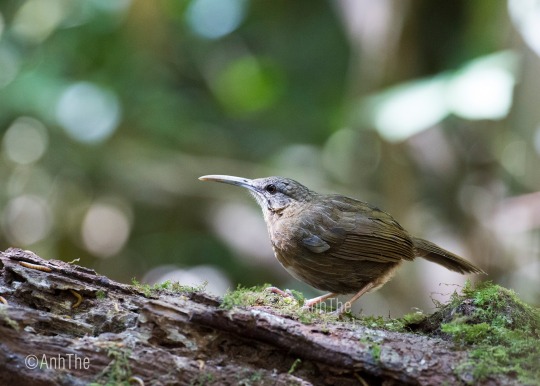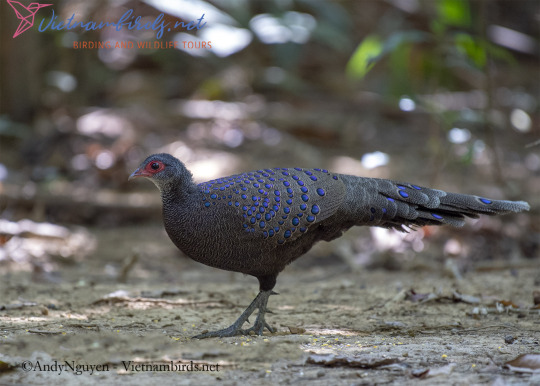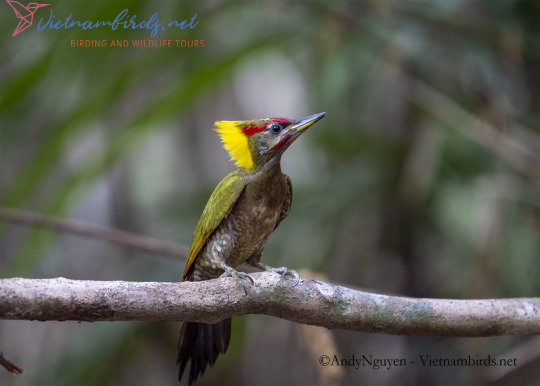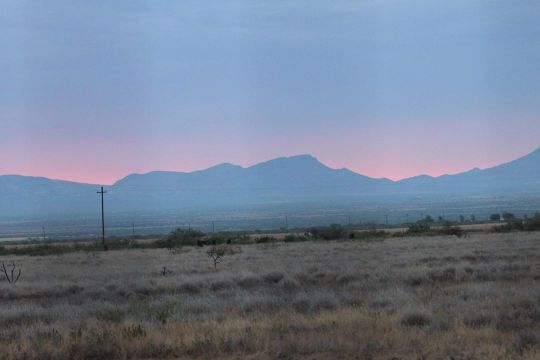#rufous-capped warbler
Explore tagged Tumblr posts
Text
Warbler Showdown Finale: Bracket 4



Fan-tailed Warbler (Basileuterus lachrymosus)
IUCN Rating: Least Concern
Range: north Mexico to northwest Nicaragua
Habitat: submontane and lower montane evergreen and semi-deciduous forests. They favor rocky and rugged areas and places with undisturbed understory.
Subspecies: None/3* (IOC recognizes 3 subspecies)
Tacarcuna Warbler (Basileuterus tacarcunae)
IUCN Rating: (not ranked)
Range: found in Eastern Panama, in the Darién, and northwestern Colombia (Chocó)
Habitat: lower montane humid forests, as well as along forest edges and well-developed second growth, between 850-1200m
Subspecies: None* (used to be a subspecies of Three-striped Warbler)
Rufous-capped Warbler (Basileuterus rufifrons)
IUCN Rating: Least Concern
Range: most of the range is in Mexico, extending south into Guatemala and sometimes appearing into Texas or Arizona
Habitat: dry-scrub, brushy ravines, open woodland, and early second growth or forest edges. Found from lowlands to 2500m
Subspecies: 5
Image Sources: Fan-tailed (Anon); Tacarcuna (Jonathan Slifkin); Rufous (Adam Jackson)
#nww showdown#the irony that fan-tailed and rufous-capped are fighting it out lol#fan-tailed warbler#tacarcuna warbler#rufous-capped warbler#basileuterus#parulidae#passeriformes#bird poll#polls#animal poll
21 notes
·
View notes
Note
Hello friend! I love your blog!
Can you tell me about poisonous birds? I trust you way more than Google, especially with its new unreliable AI...
POISONOUS BIRBS:
Hey there, so I know about Pitohuis (there are 8 species), Blue-capped Ifrit, Regent Whistler, Rufous-naped Bellbird, Arafura Shrikethrush, Rufous Shrikethrush sequester Batrachotoxins in their feathers and skin (as well as in some internal organs), obtained from their diet (most likely beetles in the genus Choresine). All are endemic to New Guinea.
Red Warblers, Spur-winged Geese, European Common Quail, Bronzewing Pigeons, and Ruffed Grouse also sequester toxins form various insects, seeds, and berries (depending on the species), and can be toxic.
Hoopoes have bacteria in their uropygial glands that produce toxins.

Hooded Pitohui (Pitohui dichrous), family Oriolidae, order Passeriformes, endemic to New Guinea
photograph by Knud Jønsson

Blue-capped Ifrit (Ifrita kowaldi), family Ifritidae, order Passeriformes, endemic to New Guinea
photograph by Frédéric PELSY

Rufous Shrikethrush (Colluricincla rufogaster), family Pachycephalidae, order Passeriformes, emdemic to New Guinea
photograph by JJ Harrison

Regent Whistler (Pachycephala schlegelii), family Pachycephalidae, order Passeriformes, endemic to New Guinea
photograph by Bradley Hacker

Rufous-naped Bellbird (Aleadryas rufinucha), family Oreocidae, order Passeriformes, endemic to New Guinea
photograph by Jerry_Oldenettel
#bird#poisonous#toxic birds#animals#nature#pitohui#bellbird#aleadryas#oreacidae#oriolidae#hoopoe#pachycephala#pachycephalidae#whistler#shrikethrush#ifrit#ifritidae#toxin#poison#batrachotoxin#new guinea
205 notes
·
View notes
Text
Bird watching around kathmandu valley
Embarking on a bird watching tour in the Kathmandu Valley unveils a rich tapestry of avian life against the backdrop of stunning landscapes and cultural heritage. Beginning at Phulchoki Hill, the highest peak in the valley, bird enthusiasts are greeted with a diverse array of species amidst lush forests and rhododendron blooms.
A unique chance to see resident and migratory birds in oak and pine forests can be had by climbing to Sivapuri Hill, a protected watershed region. Species like the Himalayan Monal, Rufous-bellied Woodpecker, and the rare Spiny Babbler can be peacefully observed in the beautiful surroundings.
The journey continues to Tokha, a quaint village nestled in the valley's outskirts. Here, birders can explore agricultural fields and forested patches, encountering species such as the Black-winged Cuckooshrike and White-capped Water Redstart.
Venturing to Bosan Danda, a ridge overlooking the valley, unveils panoramic vistas and a wealth of birdlife. Species like the Crested Serpent Eagle and Himalayan Swiftlet soar gracefully against the backdrop of terraced fields and distant mountains.
The tour then leads to Taoudaha, a serene lake surrounded by marshlands and reed beds. This wetland habitat attracts a myriad of bird species, including the Great Egret, Cinnamon Bittern, and Pied Kingfisher, offering ample opportunities for observation and photography.
Raibari, a tranquil forested area, provides a haven for birdwatchers seeking elusive species such as the Collared Owlet and Yellow-browed Warbler. The dense foliage and peaceful ambiance enhance the sense of immersion in nature's wonders.
Continuing to Sakhu, a traditional Newari settlement, bird enthusiasts can explore ancient temples and alleyways while keeping an eye out for species like the Chestnut-headed Bee-eater and White-browed Bush Robin amidst urban green spaces.
Inchangu, a pristine village surrounded by terraced fields and forests, offers a glimpse into rural life while providing excellent birding opportunities. Species like the Eurasian Jay and Black Bulbul can be spotted amidst the tranquil surroundings.
Join the Highland Eco Trek with expert guides provide valuable insights into bird behavior, ecology, and conservation efforts in the Kathmandu Valley. Whether novice or seasoned birder, this immersive journey promises unforgettable encounters with the avian treasures of Nepal's capital region, leaving lasting memories of nature's beauty and biodiversity.
1 note
·
View note
Photo

Rufous-capped Warbler Hunter Canyon, AZ 18 June 2018
#rufous-capped warbler#original photographers#photographers on tumblr#imiging#birding#bird photography
59 notes
·
View notes
Photo

Daily Bird: Rufous-Capped Warbler
Range: infrequently seen in Texas and Arizona
More information: here
Photo: https : // neotropical . birds . cornell . edu/Species-Account/nb/species/rucwar/overview
22 notes
·
View notes
Photo

July 2, 2017 - Rufous-capped Warbler (Basileuterus rufifrons)
These warblers are found from northwestern Mexico through much of western Central America, into northern South America. They eat mostly insects and spiders, foraging near the ground, often in pairs or small groups. Females lay clutches of two or three eggs in domed nests constructed from plant materials on the ground. The species is occasionally seen as far north as Arizona and Texas in the United States and has been recorded nesting in Arizona.
#rufous-capped warbler#warbler#basileuterus rufifrons#bird#birds#illustration#art#grassland#birblr art
54 notes
·
View notes
Photo

📖 Tangara gyrola 🇨🇴 Tangara cabecirrufa 🇬🇧 Rufous-capped Warbler Follow me 📸 elferandrade Instagram.com/elferandrade/ @abo_avesbogota Asociación Bogotana de Ornitología en la hermosa finca La Pedregosa. @la_pedregoza #photonature #colombianbirds #birdwatching #avescolombia #naturelover #birdstagram #birdsofprey #nationalgeographic #photooftheday #photographer #the_best_photo_today #aviturismobogota #aviturismocolombia #picoftheday #nikoncolombiaoficial #wcscolombia #birdphotographyworld #bests_birds_of_ig #best_birds_of_world #bestbirdshots #travelphotography #naturephotography #naturaleza #birds #igbirds #nuts_about_birds #photograph (en Santandersito) https://www.instagram.com/p/CavlrVhgtuN/?utm_medium=tumblr
#photonature#colombianbirds#birdwatching#avescolombia#naturelover#birdstagram#birdsofprey#nationalgeographic#photooftheday#photographer#the_best_photo_today#aviturismobogota#aviturismocolombia#picoftheday#nikoncolombiaoficial#wcscolombia#birdphotographyworld#bests_birds_of_ig#best_birds_of_world#bestbirdshots#travelphotography#naturephotography#naturaleza#birds#igbirds#nuts_about_birds#photograph
2 notes
·
View notes
Note
hi hi hi! How's your trip to Arizona going? Which part of the state are you in? WHAT BIRDS ARE YOU SEEING (P.S. I accidentally unfollowed you in the sending of this ask but only because I am very excited to know and got overzealous with clicking)
I’ve been visiting family in Benson, and combining it with my first real outside-of-California birdwatching experience since I started using eBird in 2004. On day one I birded briefly at Saguaro National Park as the sun was setting. New-to-me birds:
Pyrrhuluxia
Curve-billed Thrasher
Gila Woodpecker
Black Vulture*
On day two I birded my way up Mount Lemmon outside Tucson, starting in the Sonoran desert and hitting every plant community all the way up to the mixed coniferous forest. New-to-me birds:
Verdin*
Canyon Towhee
Abert’s Towhee
Bridled Titmouse
Yellow-eyed Junco
Mexican Jay
Olive Warbler
Greater Pewee
On day three (today) I started off trying to see a continuing Rufous-capped Warbler at Guindani Canyon not far from Benson, but I started kind of late which meant I both missed finding the warbler and did more hiking in the hot sun than was wise. That wiped me out for my intended later-in-the-day outing to Patagonia Lake and vicinity, where I only birded casually. New-to-me birds:
Northern Cardinal*
Black-tailed Gnatcatcher
Hepatic Tanager
Starred birds are ones I’ve seen before in my pre-eBird days, so they’re only new to my eBird list. The rest have all been legit lifers.
I’m heading home tomorrow and won’t have time to do much Arizona birding on the drive home, so I’m not sure I’ll get any more on this trip. I totally missed all the great hummingbirds!
But I saw lots of cool birds, and really enjoyed the experience of being surrounded by birds I didn’t know. Here’s a cute little Gray Flycatcher I saw on my way up Mount Lemmon:

15 notes
·
View notes
Photo



Best Bird Watching Trail in Vietnam
Birding tours to Vietnam – Day 1 : Ho Chi Minh City – Cat tien National Park
Guide will meet you at the hotel at 6:00 am (you will confirm exactly hotel name) then go directly to Cat Tien National Park, arrive to Cat Tien after 3.5 hour on car, after check-in time, we will go to find some birds along the main road in side Cat tien NP.
With the main roads 3km, you can see some kind of bird Cat Tien: Drongos, leafbird, tailorbird, warbler, Grey-faced Tit-babbler, Pin-striped Tit-babbler, Sunbirds, Banded kingfisher, Square-taied Drongo-cuckoo, Thick-billed Green-pigeon, Orange-breasted trogon, Woodpeckers,…
Accommodation: The Guess house inside of National park with the best room (Double room with air-condition, hot shower, free WIFI), as pictures attach below.
Meals: Breakfast on the way to Cat Tien, you will surprise about “Pho” (Vietnamese noodle with beef or chicken ), Lunch and dinner at the Tre vang restaurant inside of National park. That restaurant have menu open with Europian style or Asia style.
Day 2: Cat Tien National park – First Ideal Location for Birding Tours to Vietnam
We start at 6:00 to the restaurant for breakfast and then go to birding for highlight targets in Cat Tien : Bar-bellied Pitta, Blue-rumped Pitta, Germain’s peacock pheasant, Siamese fireback, Green-legged Partridge… in the bird-hide tent. More ever you can see some kinds of bulbul group, babbler group, warbler group, woodpeckers group …
After Dinner , we go to find some Owls : Asian barred Owlet, Brown hawk owl, Collared Scops Owl, Large-tailed nighjar.
Accommodation: At the same room
Meals: B/L/D : at the restaurant same with the first day.
Day 3: Cat Tien to Da lat City
We will leave at 6:00 am to be the first to arrive in the grasslands. This short tour will give you the experience of seeing and photographing Green peafowl, Red junglefowl, Imperial pigeon and many beautiful birds that appear early in the morning in the grasslands.
Moreover, there are many species of herbivores that also appear: sambar deer, red muntjak, wild boar, … if lucky, you can meet Gaurs.
After lunch , check out at 1:00 and moving to Da lat City, we arrive after 3 hours transport (after 17:00pm).
Accommodation in Dream Hotel – Phan Dinh Phung Street, Dalat City.
Dream Hotel is a mid-range hotel (2 stars) in Dalat. However, this is a hotel with more than 20 years serving birds, very experienced senior understand and serve the discerning birder. They have a breakfast from 5:00 am serving a variety of European and Asian styles.
There are many other accommodation options, in the more luxurious and central hotels, but serving breakfast at 5:00 am is not possible, which is very inconvenient for birders.
Day 4: Da Lat City – Bidoup Nuiba National Park
Breakfast at 5:30 and then we go directly to Bidoup Nuiba National park. Full-day for bird watching in Giang Ly and Hon Giao area. In this place, we have 3 bird-hide for us with some high-light target : Collared laughingthrush (endemic), Black-hooded laughingthrush, White-cheeked Laughingthrush, Grey-bellied Tesia, White-browed Scimitar Babbler, Rufous-throated Partridge, Black-crowned Fulvetta (endemic), Pygmy Cupwing, Large Niltava, White-tailed Robin, Snowy-browed Flycatcher, Orange-headed Thrush…
In addition, We will follow the streams along the stream, there will be many moments when there will be many birds living along the stream to take pictures: Spotted Forktail, Slaty-backed Forktail,Plumbeus Water Redstar, Blyth’s Kingfisher, Common Kingfisher.
We will move back to the hotel in Dalat city at 17:30pm.
Accommodation: at the Dream Hotel.
Meals: B at the Dream hotel restaurant
L at the restaurant near birding hide
D: Restaurant in Da lat City.
Day 5: Bidoup Nui ba National Park – Second Ideal Location for Birding Tours to Vietnam
We continute birding in Bidoup Nui Ba national park in another place with some special birds : Rusty-naped Pitta, Orange-breasted laughingthrush,
Vietnamese Greenfinch, Red-crossbill, Vietnamese Cutia, Yellow-cheeked Tit, Green-backed Tit, Chestnut vented Nuthatch…
Nigh time for: Going to Da Lat night market.
Day 6: Dalat City – Di Linh Plateau
Early morning to go to Hoa Son Dien Trang for endemic : Grey-crowned Crocias, and more rare birds : Rufous-backed Sibia, Black-headed Sibia, Bay Woodpecker, Speckled Piculet…
Then enjoy lunch time in Datanla Water Fall for: Vietnamese Cutia, Annam Barbets, Mrs Gould’s Sunbird, Langbian Sunbirds…
We will leave Da Lat at 17:00 and go to Di Linh, to Di Linh at 18:30 and stay at Thuy Duong hotel.
Day 7 : Di Linh Plateau: Deo Nui San – Third Ideal Location for Birding Tours to Vietnam
Full-day birding in Deo Nui San hot-spot, with 2 bird-hide, we can enjoy with more than 25 birds species in nice picture :
Target birds: Indochinese Green-magpie, Black-headed Parrotbill, Silver-breasted Broadbill, Bar-backed Partridge, Large Scimitar Babbler, Red-billed Scimitar Babbler.
Other birds: White-throated Rock-thrush, Siberian Thrush, Blue-throated Blue-flycatcher, Orange-headed Thrush, Buff-breasted Babbler, Grey-throated Babbler, Puff-throated Bulbul, Ashy Bulbul, White-bellied Erpornis,…
Day 8: Di Linh – Ho Chi Minh City – Flight to Pleiku City
The morning bird photography at Nui San Pass. Another bird-hide for : Blue Pitta, bar-backed patridge, Streak-wren Babbler…
We will leave Di Linh to return to Ho Chi Minh City after lunch. We will fly straight from Ho Chi Minh City to Pleiku City in the evening flight, to Pleiku City and travel by car at night in Kontum City, 40km from the airport.
Day 9: Kontum province – Mang Den town – Forth Ideal Location for Birding Tours to Vietnam
Departing at 6:00 from Kontum to Mang Den town, With 60km road we will take an hour by car. The whole day will be looking for birds in Mang Mang, the goal is : Chestnut-eared Laugingthrush.
More : Sultant Tits, Racket-tailed Treepie, Long-tailed Shrike, Crested Serpent Eagle, Stripe-breasted Woodpecker, Grey-cheeked Warbler…
Day 10: Mang Den town to Ngoc Linh Nature Reserve
Continue a full morning for bird watching in Mang Den. We will leave Mang Den after to move to Tumorong town, Arrive at hotel at 19:00. Tumorong is a very remote town in the northern highlands of Vietnam, bordering Laos and Cambodia.
Day 11: Ngoc Linh Nature Reserve – Fifth Ideal Location for Birding Tours to Vietnam
We will birding and bird photography at Ngoc Linh Nature Reserve, After more than 1 hour moving from the hotel to the core of the Nature Reserve, where there are bird-hide we have set. You will find it interesting because the birds are so beautiful, many species come to bird-hide so you can take photos of the day. Some goals such as: Red-tailed Laughingthrush, Golden-winged Laughingthrush (endemic), Coral-billed Scimitar-babbler, Rufous-winged Fulvetta, Rusty-capped Fulvetta, Grey-bellied Tesia, …
Day 12: Ngoc Linh NR to Da Nang City
Continue a full morning watching and taking photos of birds at Ngoc Linh Nature Reserve, with the goals not to be missed such as: Black-crowned Barwing, Black-headed Sibia, Golden-breasted Fulvetta, Indochinese Fulvetta, Green-tailed Sunbirds …
We will leave Ngoc Linh Nature Reserve after lunch time, and travel by car to Da Nang city, the 230km square will take 5 hours to move. Overnight at Brilliant Majectic Hotel Danang.
Day 13: Da Nang city – Bach Ma National Park – Sixth Ideal Location for Birding Tours to Vietnam
We start early at 5:30am and arrive to Bach Ma NP at 7:30am for birding allday in Bach Ma, that place have no bird hide so we only walk along the main road and some trails in the park. We rest in Phong Lan villa on the top of Bach Ma NP. After dinner, we will herping and spotlighting mammals to 23:00pm., Special we will discover some “Vietcong tunnel” on the top of Bach Ma in nighttime, have Bats insite !
Accommodation : B at Da Nang city; L, D at Phong Lan restaurant.
Day 14: Bach Ma National Park to Khe Sanh town
Birding all day and herping in nocturnal ,
Accommodation : B, L, D at Phong Lan restaurant.
Room : Phong Lan Villa on the top of Bach Ma
Day 15: Birding in Sa Mu Pass and go to PhongNha KeBang National Park
After birding and breakfast on the top of Bach Ma, we check-out at 11:00 am and go to Phong Nha Ke Bang National park , On the way, we have 1 day in Sa Mu Pass, the new destination in the Middle of Viet Nam, for some rare birds : Collared Babbler, Rufous cheeked Laughingthrush , and on the trails we can fine some diurnal snakes…
We arrive Khe Sanh town at 16:00 pm and check in
Day 16: PhongNha KeBang National Park
In the afternoon we will go to Phong Nha Ke Bang National park ,
We will checkin the Park’s hotel at 18:00pm and prepare for Herping to 23:00pm
Birding tours to Vietnam – Last day – Day 17: PhongNha KeBang National Park to Dong Hoi Airport, Back to Hochiminh City
In this park we can see Ha tinh Langur (one of the rarest primates in Vietnam and on the world ) , Anyway we can see some interesting birds : Red-collared Woodpecker , Sooty babbler, Red-headed Trogonand on the trails we can fine some diurnal snakes in the morning and check out, we will go to Dong Hoi airport (60km from the park) and fly to Ho chi minh City (Fly Depart at 20:00 pm)Arrive to your hotel in HCM City at the midnight.
More Bird Watching Trails in Vietnam: https://vietnambirds.net/top-bird-watching-trails-in-vietnam-you-should-spend-your-holiday/
9 notes
·
View notes
Text

Happy Birdsday! Rufous-capped warbler.
20 notes
·
View notes
Text
Warbler Showdown; Bracket 4, Poll 5


Rufous-capped Warbler (Basileuterus rufifrons)
IUCN Rating: Least Concern
Range: most of the range is in Mexico, extending south into Guatemala and sometimes appearing into Texas or Arizona
Habitat: dry-scrub, brushy ravines, open woodland, and early second growth or forest edges. Found from lowlands to 2500m
Subspecies: 5
Costa Rican Warbler (Basileuterus melanotis)
IUCN Rating: (not ranked)
Range: mountain range of Costa Rica and Panama
Habitat: submontane and lower montane humid forests in subtropical zones, as well as forest edges and well-developed second growth; from 600-2100m
Subspecies: None* (used to be a subspecies of Three-striped Warbler)
Image Sources: Rufous (Adam Jackson) CRWA (David Hollie)
#NWW Showdown#rufous capped warbler#costa rican warbler#black eared warbler#basileuterus#parulidae#passeriformes#animal poll#bird poll
5 notes
·
View notes
Photo

Rufous-capped Warbler (Florida Canyon, AZ)
Source: http://bit.ly/2I8uWKF
83 notes
·
View notes
Text
There are a lot more birds than in the graphic:
Birds
RANK
Wild turkey 1
Common raven 2
Acorn woodpecker 3
Gambel's quail 4
Black-bellied whistling-duck 5
American crow 6
Curve-billed thrasher 7
Red-headed woodpecker 8
Gila woodpecker 9
Pileated woodpecker 10
Rock pigeon 11
Mallard (northern) 12
Northern mockingbird 13
Rock pigeon (feral pigeon) 14
Common grackle 15
Black-billed magpie 16
Green jay 17
Abert's towhee 18
California scrub-jay 19
Canyon towhee 20
BIRD RANK
Red-bellied woodpecker 21
Band-tailed pigeon 22
Northern flicker 23
Yellow-bellied sapsucker 24
Brown thrasher 25
White-winged dove 26
European starling 27
California quail 28
Woodhouse's scrub-jay 29
Eurasian collared-dove 30
Pinyon jay 31
Blue jay 32
American robin 33
Steller's jay 34
Red-winged blackbird 35
Varied thrush 36
Hairy woodpecker 37
Baltimore oriole 38
Cedar waxwing 39
California towhee 40
BIRD RANK
Gray jay 41
Mourning dove 42
Spotted towhee 43
Brown-headed cowbird 44
Fox sparrow 45
Black phoebe 46
Eastern towhee 47
Eastern phoebe 48
Gray catbird 49
Red crossbill 50
Northern cardinal 51
Evening grosbeak 52
Golden-crowned sparrow 53
Eastern bluebird 54
Song sparrow 55
Hermit thrush 56
Downy woodpecker 57
Rufous hummingbird 58
Scaly-breasted munia 59
Allen's hummingbird 60
BIRD RANK
White-crowned sparrow 61
Pine grosbeak 62
House sparrow 63
Yellow-rumped warbler 64
Costa's hummingbird 65
White-breasted nuthatch 66
White-throated sparrow 67
Black-crested titmouse 68
Pygmy nuthatch 69
Cassin's finch 70
Carolina wren 71
Brown-headed nuthatch 72
Oak titmouse 73
Tufted titmouse 74
House finch 75
Pine warbler 76
Red-breasted nuthatch 77
Dark-eyed junco 78
Pine siskin 79
American tree sparrow 80
BIRD RANK
Anna's hummingbird 81
Purple finch 82
Common redpoll 83
Field sparrow 84
Orange-crowned warbler 85
American goldfinch 86
Mountain chickadee 87
Chestnut-backed chickadee 88
Black-capped chickadee 89
Carolina chickadee 90
Townsend's warbler 91
Boreal chickadee 92
Lesser goldfinch 93
Bewick's wren 94
Painted bunting 95
Bushtit 96
Ruby-throated hummingbird 97
Ruby-crowned kinglet 98
Chipping sparrow 99
Brown creeper 100
Note: Limited to the 100 species with the most interactions at feeders in the U.S. and Canada; dominance measured with a Bradley-Terry model.
Source: Eliot Miller, Cornell Lab of Ornithology; Project FeederWatch
This morning I watched a blue heron fly majestically into the pond across the street, only to be immediately shown by an irate goose that pecking order is not necessarily proportional to wingspan.
6K notes
·
View notes
Photo

Photo of the Day – The Rufous-capped Warbler (Basileuterus rufifrons) occurs in a wide range of scrubby or wooded habitats, but it tends to stay clear of more densely forested areas. They tend to stay close to the ground when foraging, watching the ground for movement from insects and spiders.
This lovely photo was taken by Forrest Rowland
#RockjumperBirding#birds#birding#birdwatching#nature#wildlife#photography#birdphotography#naturephotography#wildlifephotography#warbler
128 notes
·
View notes
Photo

📖 Basileuterus delattrii 🇨🇴 Arañero Cabecirrufo 🇬🇧 Rufous-capped Warbler Follow me 📸 elferandrade Instagram.com/elferandrade/ @abo_avesbogota Asociación Bogotana de Ornitología en la hermosa finca La Pedregosa. @la_pedregoza #photonature #colombianbirds #birdwatching #avescolombia #naturelover #birdstagram #birdsofprey #nationalgeographic #photooftheday #photographer #the_best_photo_today #aviturismobogota #aviturismocolombia #picoftheday #nikoncolombiaoficial #wcscolombia #birdphotographyworld #bests_birds_of_ig #best_birds_of_world #bestbirdshots #travelphotography #naturephotography #naturaleza #birds #igbirds #nuts_about_birds #photograph (en Santandersito) https://www.instagram.com/p/CavlIVpghY_/?utm_medium=tumblr
#photonature#colombianbirds#birdwatching#avescolombia#naturelover#birdstagram#birdsofprey#nationalgeographic#photooftheday#photographer#the_best_photo_today#aviturismobogota#aviturismocolombia#picoftheday#nikoncolombiaoficial#wcscolombia#birdphotographyworld#bests_birds_of_ig#best_birds_of_world#bestbirdshots#travelphotography#naturephotography#naturaleza#birds#igbirds#nuts_about_birds#photograph
2 notes
·
View notes
Photo

Moving to Texas for the BCVI Jon was the furthest west I had been but for the birds we go further. Some of us took a trip out to rural SE Arizona (avoiding people) and did some camping among the amazing sky islands of Arizona moving through the various canyons and mountain ranges like the Chiricahua’s, Huachuca’s, and Santa Rita’s (making a special trip to visit the Saguaro National Park). Seeing tons of species (about 189 including 12 different species of hummingbirds)! There’s absolutely too much to do in Arizona for two weeks so I know for certain I’ll be back sooner rather than later. Avian highlights of the trip included; Rufous Capped Warbler, Plain-Capped Starthroat, White-eared Hummingbird, Five-Stripped Sparrow, Yellow-Green Vireo, Elegant Trogon, Botteri’s Sparrow, Thick-Billed Kingbird, and Phainopepla just to name a few! (at Arizona) https://www.instagram.com/p/CDH1FPIpD2s/?igshid=ed1rc9ognjcq
0 notes